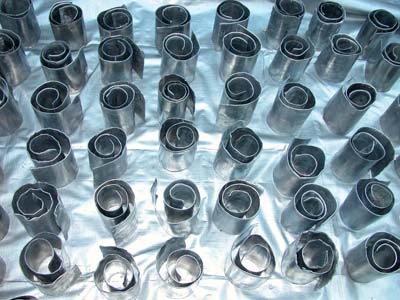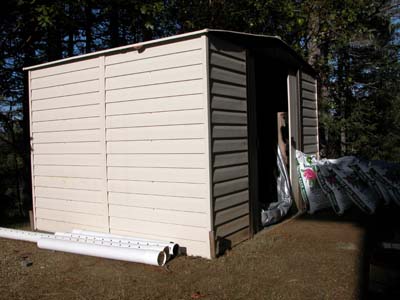You might ask why the term “flake” is applied to describe authentic Dutch flake lead white. The answer comes from the appearance of the material as it actually flakes off the metallic lead strips during the formation process. Modern lead white pigment found commonly in art supply stores is not a true flake white made in the process called Dutch Method White Lead shown here in this post
You can see the complexity of the process in these images from Natural Pigments manufacturing of the pigment beginning in 2008. The initial step was to build a shed to house the coils which were placed in earthenware pots filled about one-third with vinegar and immersed in horse manure. The different colored pots were indicative of two different manufacturing experiments.
Strips of lead sheet were cleaned and rolled into spiral coils before loading into earthenware pots. Coils of lead sheet were more common in 16th century Dutch white lead works than were lead “buckles.” The buckles were often used together with lead sheets, especially in 18th century England and afterwards in the U.S., just as tan bark replaced stable-litter (horse manure) in many of these lead works.

More on the making of this amazing pigment next time.
All images and information courtesy, George O’Hanlon, Natural Pigments

